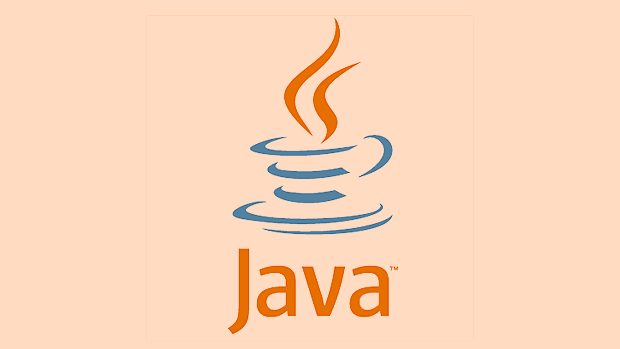Java memory leak refers to the object no longer used but cannot be recycled by GC, resulting in invalid memory usage. Common types include long-lifetime objects holding short-lifetime objects, listeners not logged out, static collection misuse, and internal classes holding external class references. The discovery methods include observing GC logs, monitoring using VisualVM or JConsole, generating Heap Dump analysis, and positioning using Profiling tools. The troubleshooting steps are to check memory overflow errors, monitor memory trends, generate Dump files, analyze object distribution and GC Roots paths. It is recommended to clean the cache structure regularly, log out the listener in a timely manner, avoid the infinite growth of static collections, use non-static internal classes with caution, and use weak and soft references rationally.

Java Memory Leak refers to the fact that the object is no longer used during the run process of the program, but for some reasons, it cannot be recycled by the garbage collector (GC) , resulting in invalid memory. Although Java has an automatic garbage collection mechanism, it cannot completely avoid memory leaks.

This will cause the application memory to continue to grow, which may eventually raise OutOfMemoryError , affect performance and even crash.
1. Common memory leak types in Java
Java memory leaks are mainly reflected in the inability to be recycled by useless objects . Common types include:

Long-life cycle objects hold references to short-life cycle objects
For example, a cache collection has no cleanup mechanism and continues to add objects without releasing them.-
Listeners and callbacks are not logged out
If the registered objects in the event listener and observer mode are not removed in time.
Misuse of static collection classes
The life cycle of static variables is consistent with that of the application. If the object is added to the collection and is not cleaned up, it is easy to cause leakage.Internal class holds external class references
In particular, non-static inner classes (such as anonymous inner classes) will implicitly hold references to external classes, resulting in the external classes being unable to be recycled.
2. How to detect Java memory leaks?
Memory leaks do not directly report errors like syntax errors, and need to be analyzed through tooling to confirm. Here are some common methods:
Observe GC log
If the elderly frequently have Full GC and the memory recovery effect is poor, there may be a memory leak.Using VisualVM or JConsole
These JDKs come with tools to monitor the changes in the heap memory, check the number of object instances, and initially determine whether there is an abnormal growth.Generate Heap Dump File
Usejmap -dump:live,format=b,file=heap.bin <pid></pid>command to generate a heap dump file, and then use MAT (Memory Analyzer) and other tools to analyze it.Using the Profiling tool
Professional tools such as Eclipse MAT, YourKit, JProfiler, etc. can help you locate which objects occupy a lot of memory and find out their reference chains.
3. Basic steps for troubleshooting memory leaks
Troubleshooting memory leaks is a systematic task, usually carried out in the following process:
- Check whether the application has memory overflow errors (such as
java.lang.OutOfMemoryError: Java heap space) - Monitor memory usage trends and determine whether there is continuous growth
- Generate Heap Dump at the appropriate time
- Use MAT and other tools to open a Dump file and view the distribution of objects in memory
- Find a class that takes up a lot of memory and check its GC Roots path
- Analyze the reference chain and confirm whether there are unnecessary strong references to block GC
The key is to find the object that "should be recycled but has been alive" and see who is holding its reference.
4. Suggestions to reduce the risk of memory leaks
In order to avoid memory leaks, some encoding habits should be paid attention to when developing:
- The cache structure must have a cleanup mechanism, such as using
WeakHashMapor cleaning it regularly - Registered listeners and callbacks must be cancelled in time
- Try to avoid unlimited growth of static collection classes
- Be careful when using non-static inner class it implicit references to external classes
- Use WeakReference and SoftReference
For large projects, automated testing and monitoring tools can also be combined to expose potential problems as much as possible before going online.
Basically that's it. Memory leaks are not a problem with the Java language, but a logical oversight in the code. As long as you pay attention to the reference relationship and cooperate with tool analysis, you can find and solve it in most cases.
The above is the detailed content of What is a memory leak in Java and how to find it?. For more information, please follow other related articles on the PHP Chinese website!

Hot AI Tools

Undress AI Tool
Undress images for free

Undresser.AI Undress
AI-powered app for creating realistic nude photos

AI Clothes Remover
Online AI tool for removing clothes from photos.

Clothoff.io
AI clothes remover

Video Face Swap
Swap faces in any video effortlessly with our completely free AI face swap tool!

Hot Article

Hot Tools

Notepad++7.3.1
Easy-to-use and free code editor

SublimeText3 Chinese version
Chinese version, very easy to use

Zend Studio 13.0.1
Powerful PHP integrated development environment

Dreamweaver CS6
Visual web development tools

SublimeText3 Mac version
God-level code editing software (SublimeText3)

Hot Topics
 Difference between HashMap and Hashtable?
Jun 24, 2025 pm 09:41 PM
Difference between HashMap and Hashtable?
Jun 24, 2025 pm 09:41 PM
The difference between HashMap and Hashtable is mainly reflected in thread safety, null value support and performance. 1. In terms of thread safety, Hashtable is thread-safe, and its methods are mostly synchronous methods, while HashMap does not perform synchronization processing, which is not thread-safe; 2. In terms of null value support, HashMap allows one null key and multiple null values, while Hashtable does not allow null keys or values, otherwise a NullPointerException will be thrown; 3. In terms of performance, HashMap is more efficient because there is no synchronization mechanism, and Hashtable has a low locking performance for each operation. It is recommended to use ConcurrentHashMap instead.
 Why do we need wrapper classes?
Jun 28, 2025 am 01:01 AM
Why do we need wrapper classes?
Jun 28, 2025 am 01:01 AM
Java uses wrapper classes because basic data types cannot directly participate in object-oriented operations, and object forms are often required in actual needs; 1. Collection classes can only store objects, such as Lists use automatic boxing to store numerical values; 2. Generics do not support basic types, and packaging classes must be used as type parameters; 3. Packaging classes can represent null values ??to distinguish unset or missing data; 4. Packaging classes provide practical methods such as string conversion to facilitate data parsing and processing, so in scenarios where these characteristics are needed, packaging classes are indispensable.
 What are static methods in interfaces?
Jun 24, 2025 pm 10:57 PM
What are static methods in interfaces?
Jun 24, 2025 pm 10:57 PM
StaticmethodsininterfaceswereintroducedinJava8toallowutilityfunctionswithintheinterfaceitself.BeforeJava8,suchfunctionsrequiredseparatehelperclasses,leadingtodisorganizedcode.Now,staticmethodsprovidethreekeybenefits:1)theyenableutilitymethodsdirectly
 How does JIT compiler optimize code?
Jun 24, 2025 pm 10:45 PM
How does JIT compiler optimize code?
Jun 24, 2025 pm 10:45 PM
The JIT compiler optimizes code through four methods: method inline, hot spot detection and compilation, type speculation and devirtualization, and redundant operation elimination. 1. Method inline reduces call overhead and inserts frequently called small methods directly into the call; 2. Hot spot detection and high-frequency code execution and centrally optimize it to save resources; 3. Type speculation collects runtime type information to achieve devirtualization calls, improving efficiency; 4. Redundant operations eliminate useless calculations and inspections based on operational data deletion, enhancing performance.
 What is an instance initializer block?
Jun 25, 2025 pm 12:21 PM
What is an instance initializer block?
Jun 25, 2025 pm 12:21 PM
Instance initialization blocks are used in Java to run initialization logic when creating objects, which are executed before the constructor. It is suitable for scenarios where multiple constructors share initialization code, complex field initialization, or anonymous class initialization scenarios. Unlike static initialization blocks, it is executed every time it is instantiated, while static initialization blocks only run once when the class is loaded.
 What is the `final` keyword for variables?
Jun 24, 2025 pm 07:29 PM
What is the `final` keyword for variables?
Jun 24, 2025 pm 07:29 PM
InJava,thefinalkeywordpreventsavariable’svaluefrombeingchangedafterassignment,butitsbehaviordiffersforprimitivesandobjectreferences.Forprimitivevariables,finalmakesthevalueconstant,asinfinalintMAX_SPEED=100;wherereassignmentcausesanerror.Forobjectref
 What is the Factory pattern?
Jun 24, 2025 pm 11:29 PM
What is the Factory pattern?
Jun 24, 2025 pm 11:29 PM
Factory mode is used to encapsulate object creation logic, making the code more flexible, easy to maintain, and loosely coupled. The core answer is: by centrally managing object creation logic, hiding implementation details, and supporting the creation of multiple related objects. The specific description is as follows: the factory mode handes object creation to a special factory class or method for processing, avoiding the use of newClass() directly; it is suitable for scenarios where multiple types of related objects are created, creation logic may change, and implementation details need to be hidden; for example, in the payment processor, Stripe, PayPal and other instances are created through factories; its implementation includes the object returned by the factory class based on input parameters, and all objects realize a common interface; common variants include simple factories, factory methods and abstract factories, which are suitable for different complexities.
 What is type casting?
Jun 24, 2025 pm 11:09 PM
What is type casting?
Jun 24, 2025 pm 11:09 PM
There are two types of conversion: implicit and explicit. 1. Implicit conversion occurs automatically, such as converting int to double; 2. Explicit conversion requires manual operation, such as using (int)myDouble. A case where type conversion is required includes processing user input, mathematical operations, or passing different types of values ??between functions. Issues that need to be noted are: turning floating-point numbers into integers will truncate the fractional part, turning large types into small types may lead to data loss, and some languages ??do not allow direct conversion of specific types. A proper understanding of language conversion rules helps avoid errors.







